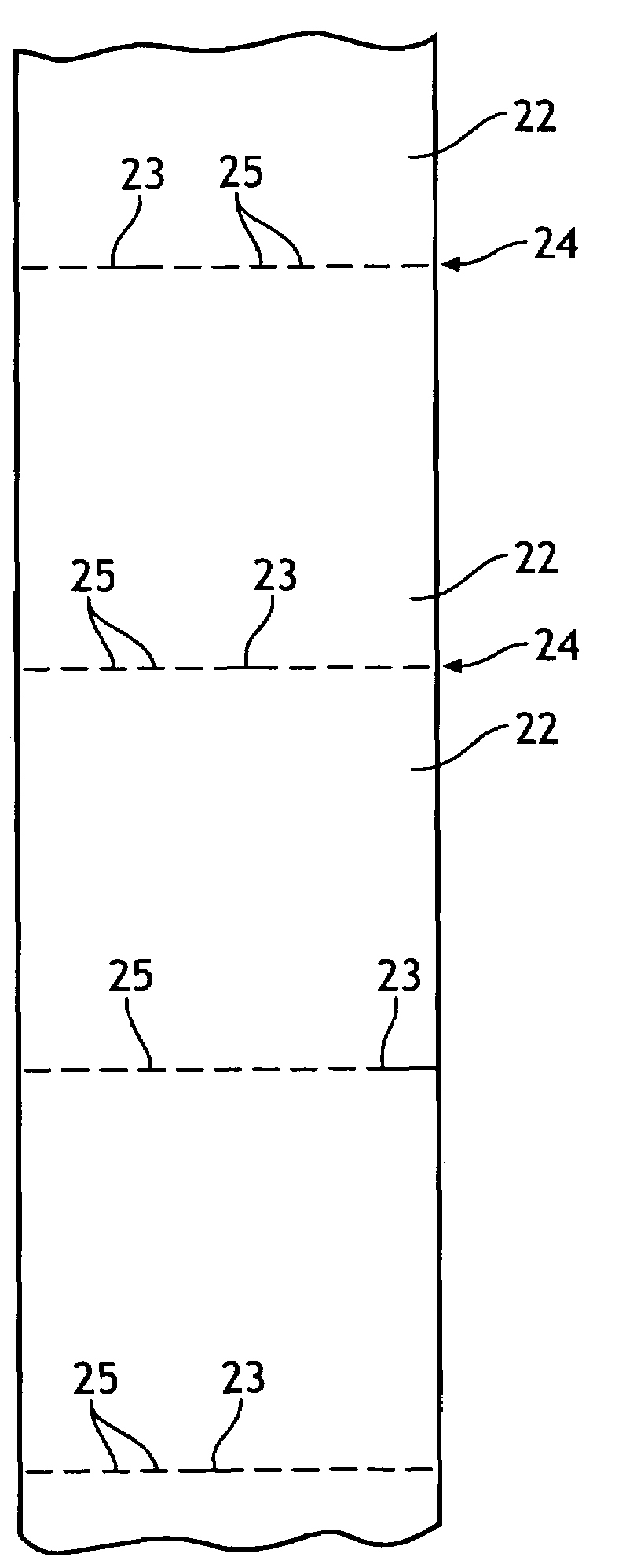Separably joined relationship between adjoining wipes
a technology of joining relationship and adjoining wipes, applied in the direction of identification means, instruments, seals, etc., can solve the problems of not being undesirable, causing a wipe to fall back, etc., and achieve the effect of reducing the likelihood of wipe fallback, improving dispensing, and being more cost-effective and reliabl
- Summary
- Abstract
- Description
- Claims
- Application Information
AI Technical Summary
Benefits of technology
Problems solved by technology
Method used
Image
Examples
Embodiment Construction
[0028]As representatively illustrated throughout the figures, and for explanation now referring to FIG. 1, there is depicted an apparatus and process for making a stack 10 of a plurality of separably joined wipes from fan folded material. Starting on the right side of FIG. 1, there is a roll 30 of basesheet material 31. The roll can be supported by a roll support 33. The material is fed from the roll 30 through a series of advancing rollers such as idler rollers 32 and dancer roller 34. From there the web of material 31 travels to a slitter assembly 40. The slitter assembly can include an anvil roller 42 and slitting blades 44 that form weakened lines 24 (e.g., perforated slitting blades that thereby form perforations 25 and 23) in the sheet as it travels in the machine direction 38 through the slitting assembly. As a result of traveling through the slitting assembly, the web is formed into a plurality of panels 28 joined to adjacent panels along the plurality of weakened lines 24. ...
PUM
| Property | Measurement | Unit |
|---|---|---|
| cut length | aaaaa | aaaaa |
| cut length | aaaaa | aaaaa |
| width | aaaaa | aaaaa |
Abstract
Description
Claims
Application Information
 Login to View More
Login to View More - R&D
- Intellectual Property
- Life Sciences
- Materials
- Tech Scout
- Unparalleled Data Quality
- Higher Quality Content
- 60% Fewer Hallucinations
Browse by: Latest US Patents, China's latest patents, Technical Efficacy Thesaurus, Application Domain, Technology Topic, Popular Technical Reports.
© 2025 PatSnap. All rights reserved.Legal|Privacy policy|Modern Slavery Act Transparency Statement|Sitemap|About US| Contact US: help@patsnap.com



